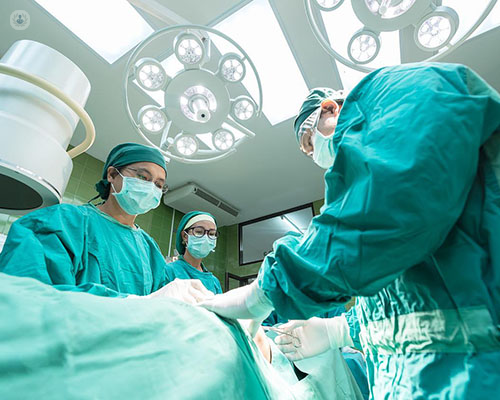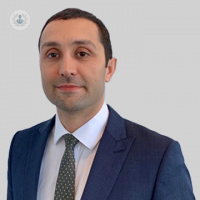Cholecytectomy: everything you need to know before the procedure
Autore:Cholecystectomy, or gallbladder removal, is one of the most common surgical procedures performed in the UK. In his latest article, Mr Nima Abbassi-Ghadi explains everything you need to know about this procedure.

What is a laparoscopic cholecystectomy?
This is the medical term for the removal of the gallbladder using keyhole surgery. Symptomatic gallstones are the most common reason a laparoscopic cholecystectomy is performed.
The operation is performed under general anaesthetic. Several small cuts (5-10mm) are made on the tummy to allow the placement of laparoscopic ports into the abdominal cavity. Working space is created within the abdominal cavity with the introduction of carbon dioxide gas through one of the ports. A keyhole camera and instruments are introduced through the ports.
The gallbladder is then carefully dissected off the liver bed and divided from its adjoining structures with the use of locking clips. The gallbladder is then retrieved in a bag through the umbilical port and sent for analysis. The operation on average takes 45 minutes. Once awake, it will take a couple of hours for you to recover from the anaesthetic. Depending on the speed of your recovery you will have the option to go home the same day or stay in the hospital overnight.
When is it required? Why and when should the gallbladder be removed?
Gallstones are found in approximately 10–20% of the global adult population. Gallbladder removal is only advised if you develop symptoms or complications from gallstones. Without removal, you may run the risk of further attacks. Complications of gallstones include:
- Biliary colic - sudden, intense pain under your rib cage lasting between 1 and 5 hours. It is commonly triggered by eating fatty foods and can be associated with nausea
- Cholecystitis – Infection of the gallbladder, causing severe pain and fever lasting for several days.
- Jaundice – due to blockage of the common bile duct with gallstones
- Pancreatitis - inflammation of the pancreas due to a stone blocking the bile duct.
Other less common reasons for gallbladder removal include gallbladder polyps, suspected gallbladder cancer, biliary dyskinesia (functional abnormality of the gallbladder) and acalculous cholecystitis with evidence of gangrene or perforation.

Is it painful? How safe is it?
Similar to all keyhole surgery, you will have some discomfort in the upper abdomen and shoulder tip for two days after the procedure. The discomfort is well controlled with pain relief tablets. Most patients will make a full physical recovery within two weeks.
Gallbladder surgery is one of the most commonly performed operations internationally. However, like any operation, it can carry a risk. General risks of keyhole surgery are low but include infection, bleeding, damage to intra-abdominal organs and clots in the leg or lung. Risks specific to cholecystectomy include bile duct injury (1 in 500 patients – national data). If this happens it needs fixing and nearly always involves a bigger operation and a longer recovery.
Bile leaks can also occur and may require an ultrasound or CT-guided drainage. Stones can also be retained in the biliary system and usually pass of their own accord but sometimes cause pain and jaundice and need an endoscopy for removal of the stones in the post-operative setting. Approximately 5% of patients may experience diarrhoea postoperatively. In the majority of patients, this settles down.
Will I suffer from any side effects after a laparoscopic cholecystectomy?
Patients can resume a normal diet after the operation and do not need to avoid fatty foods. Long-term side effects are rare as the body functions perfectly well without a gallbladder. All the bile that you need for the absorption of food drains directly from the liver into the gut and is not influenced by gallbladder removal. Five per cent of patients can develop diarrhoea that persists after the operation. If this is the case the majority of patients can be successfully treated with the medication Cholestyramine.

Can it be done robotically?
Robotic surgery is a more advanced method of keyhole surgery, that is slowly replacing the traditional laparoscopic approach. Both approaches use similar cuts on the tummy wall but the main difference is the technology used to perform the operation. In robotic surgery, the surgeon controls state-of-the-art robotic instruments, allowing for greater accuracy of dissection.
The 3-dimensional optics also improves the accuracy of surgery. We have found that Robotic surgery is particularly useful in more complex cases and may also reduce post-operative pain/discomfort in our patients.
Mr Nima Abassi-Ghadi is a leading general and gastrointestinal surgeon based in Guildford. If you would like to book a consultation with Mr Abbassi-Ghadi, you can do so via his Top Doctors profile.


